I did not have quite enough time to develop this piece to what I wanted, but for now it will have to suffice. I wanted to look at the situation in Syria, but I only had time to outline who has what near Syria. Click the image for the larger version.

I did not have quite enough time to develop this piece to what I wanted, but for now it will have to suffice. I wanted to look at the situation in Syria, but I only had time to outline who has what near Syria. Click the image for the larger version.

Recently my hobby of my family’s history has focused on my Rusyn (or Ruthenian) roots. However, this recent work out of Stanford University piques my interest in my English heritage, even though much of it is very far back in time. Using my 23 × great-grandfather Reynold de Mohun you can begin to see how it links persons within families, how those lives intersected over time, and the geographical areas where that person lived. In Reynold’s case, it was the 12th–13th centuries in Somerset, England.
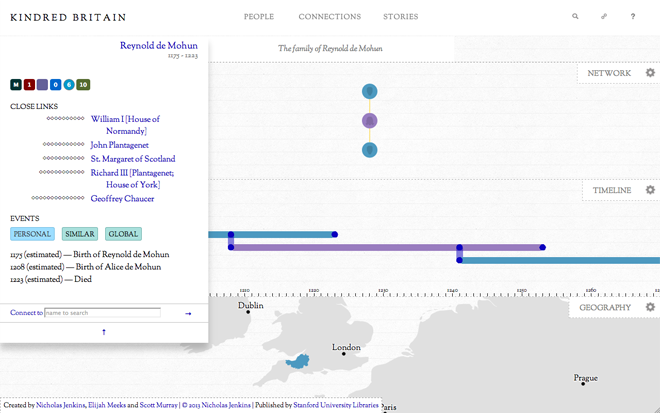
But as the title kindred implies, this piece is not just about direct family connections, but also the marriages and close cultural links between certainly the elite of British society. Below is how Reynold is connected to King William I, better known as William the Conqueror.
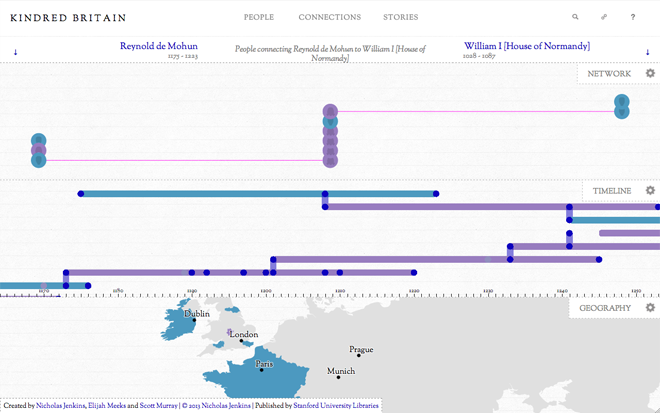
Family history or genealogy is a topic ripe for data visualisation and information design because it is all about connections. But I have found beyond the common family tree diagram little interesting has been created. This work is a solid start in the right direction.
Credit for the piece goes to Nicholas Jenkins, Elijah Meeks, and Scott Murray.
We have all heard talk about cutting cable, i.e. unsubscribing from cable television. But the question is what is replacing it if anything? Fortunately, this really nice graphic produced by Quartz shows the market over the course of the last five years.

It is a really nice use of small multiples and the power of not overlapping size and growth charts, or combo-charts, just because you can. Different metrics deserve different charts. The important part is placement, and that’s where a good designer can make sure to place relevant data near its partner.
Credit for the piece goes to Ritchie King.
We already got to Mars. At the end of a week of maps and map-related things. Here’s a map of Mars. Well, sort of. It’s more of a map of Mars as explored by Curiosity. (Remember that guy?)
It’s an interactive piece from the New York Times that charts out just where the rover has driven and photographs of the stops along the way. There’s also a nice little chart that shows just how much of the trip has consisted of driving.

Credit for the piece goes to Jonathan Corum and Jeremy White.
Mark Zuckerberg wants to get more people on the internet. And why not, it’s not like his company, a small entity you may not have heard of called Facebook, has anything to do with the internet. So this map by the Washington Post looks at what proportions of the world’s countries are using the internet.
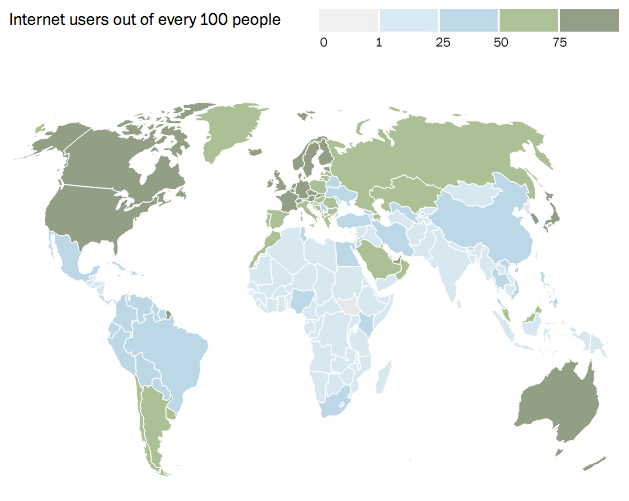
Credit for the piece goes to Darla Cameron.
Yes, yes it is. This map from the Washington Post looks at global temperature change since 1901. The article it supports is about how scientists are now all but certain mankind is responsible for global warming. Personally I prefer the term climate change because global warming sounds as if everything warms and as this map shows, clearly that is not the case.
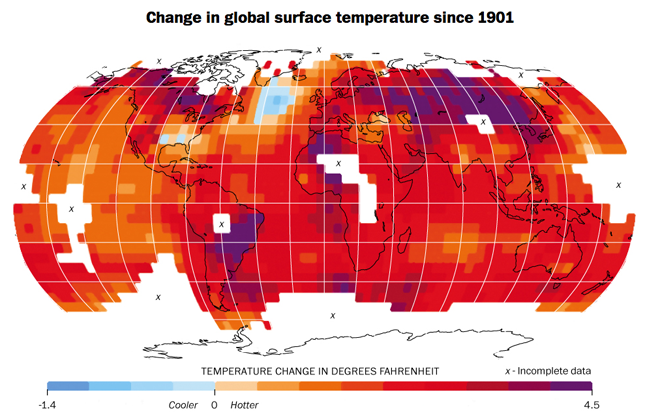
Credit for the piece goes to Patterson Clark.
This map comes from the Washington Post and it uses the American Community Survey to explore languages spoken by Americans at home other than English.

I got stuck (in a good way) on the seemingly random counties of German speakers. After I poked around a bit, I found one where almost 50% of the county speaks German. After some quick investigation, it turns out that Holmes County, Ohio is a centre for the Amish population. The Amish, of course, will often speak German or Pennsylvania Dutch, thus accounting for the abnormally high percentage of German speakers.
Credit for the piece goes to Dan Keating and Darla Cameron.
For those of you who read this blog and are not from New York, Mayor Bloomberg is done later this year; he is not running for reelection. So now is the time for retrospective and plaudits for the long-serving mayor. The New York Times published a piece this weekend examining how all of Bloomberg’s changes for redevelopment have reshaped the city of New York.
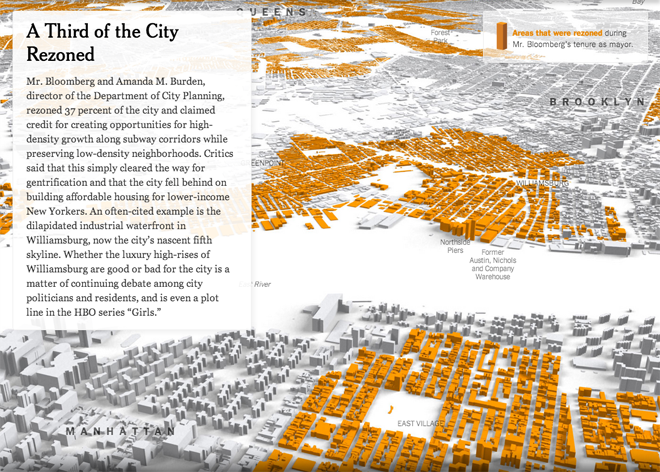
Credit for the piece goes to Ford Fessenden, Tom Giratikanon, Josh Keller, Archie Tse, Tim Wallace, Derek Watkins, Jeremy White, and Karen Yourish
Fear not, this graphic makes about as much sense as the title. The concept is actually a worthwhile exploration of the variation in caffeine across cups of coffee from different cafes and coffee shops. But, this visualisation fails at showing it.
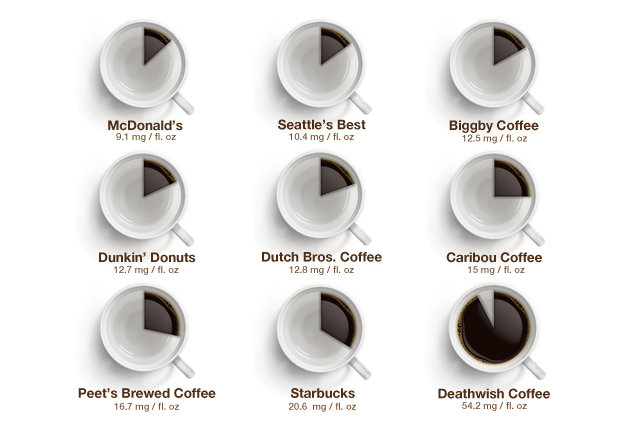
Remember, pie charts show the piece amongst the whole. What is the whole in this case? A cup of coffee? No, the data labels indicate milligrams per fluid ounce. It appears as if 60mg./fl. oz. is the whole. A bit arbitrary that. So what happens if you lose the trite pie as a cup of coffee device and simply chart the values. Oh wait, that’s not very hard to do. (I also threw in what I believe to be the benchmark for an average cup of brewed coffee, though I could be wrong.)
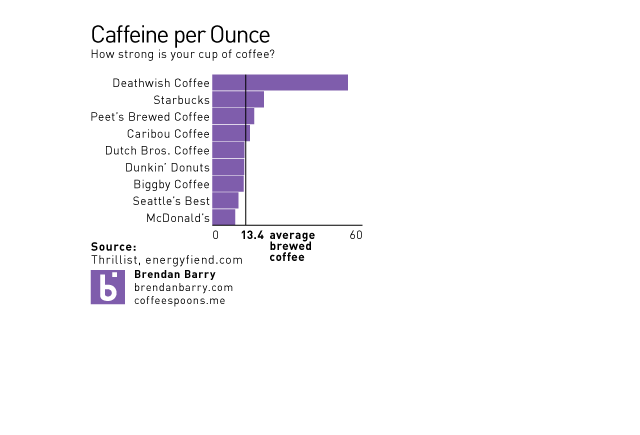
Much clearer. More concise (I used less than the original’s dimensions).
Credit for the original piece goes to Dan Gentile.
Today’s graphic comes from Thomson Reuters. It charts the success of 3D movies that have been released and how long those movies stayed in the theatres.

Credit for the piece goes to S. Scarr, G. Cabrera, and K. Pong.